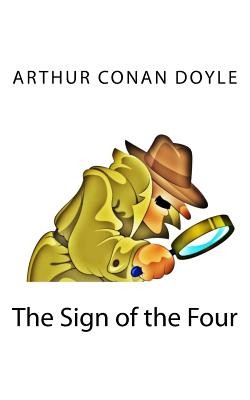
- We will send in 10–14 business days.
- Author: Arthur Conan Doyle
- Publisher: CreateSpace Independent Publishing Platform
- ISBN-10: 1494748649
- ISBN-13: 9781494748647
- Format: 12.7 x 20.3 x 0.8 cm, softcover
- Language: English
- SAVE -10% with code: EXTRA
Reviews
Description
The Sign of the Four (1890), also called The Sign of Four, is the second novel featuring Sherlock Holmes written by Sir Arthur Conan Doyle. Doyle wrote four novels and 56 stories starring the fictional detective. The story is set in 1888. The Sign of the Four has a complex plot involving service in East India Company, India, the Indian Rebellion of 1857, a stolen treasure, and a secret pact among four convicts ("the Four" of the title) and two corrupt prison guards. It presents the detective's drug habit and humanizes him in a way that had not been done in A Study in Scarlet. It also introduces Doctor Watson's future wife, Mary Morstan. In 1888 a client Mary Morstan comes with two puzzles for Holmes. The first is the disappearance of her father Captain Arthur Morstan in December 1878 and the second is that she has received 6 pearls in the mail from an anonymous benefactor once a year since 1882, since she answered an anonymous newspaper query inquiring for her. With the last pearl she has received a letter remarking that she has been a wronged woman and asks for meeting. Holmes takes the case and soon discovers that Major Sholto (Morstan's only friend who had denied seeing Morstan) had died in 1882 and that within a short span of time Mary Morstan began to receive the pearls, implying a connection. The only clue Mary can give Holmes is a map of a fortress with the names of Jonathan Small and three Sikhs, who are strangely named as Dost Akbar, Abdullah Khan, Mahomet Singh ...
- Author: Arthur Conan Doyle
- Publisher: CreateSpace Independent Publishing Platform
- ISBN-10: 1494748649
- ISBN-13: 9781494748647
- Format: 12.7 x 20.3 x 0.8 cm, softcover
- Language: English English
The Sign of the Four (1890), also called The Sign of Four, is the second novel featuring Sherlock Holmes written by Sir Arthur Conan Doyle. Doyle wrote four novels and 56 stories starring the fictional detective. The story is set in 1888. The Sign of the Four has a complex plot involving service in East India Company, India, the Indian Rebellion of 1857, a stolen treasure, and a secret pact among four convicts ("the Four" of the title) and two corrupt prison guards. It presents the detective's drug habit and humanizes him in a way that had not been done in A Study in Scarlet. It also introduces Doctor Watson's future wife, Mary Morstan. In 1888 a client Mary Morstan comes with two puzzles for Holmes. The first is the disappearance of her father Captain Arthur Morstan in December 1878 and the second is that she has received 6 pearls in the mail from an anonymous benefactor once a year since 1882, since she answered an anonymous newspaper query inquiring for her. With the last pearl she has received a letter remarking that she has been a wronged woman and asks for meeting. Holmes takes the case and soon discovers that Major Sholto (Morstan's only friend who had denied seeing Morstan) had died in 1882 and that within a short span of time Mary Morstan began to receive the pearls, implying a connection. The only clue Mary can give Holmes is a map of a fortress with the names of Jonathan Small and three Sikhs, who are strangely named as Dost Akbar, Abdullah Khan, Mahomet Singh ...


Reviews